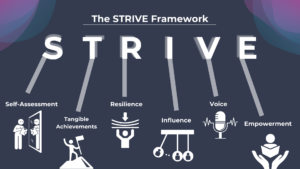Learn to tackle the three most commonly experienced negative emotions that everyone can identify with: frustration, worry and anger.
Happiness, satisfaction, enjoyment, enthusiasm, cheerfulness, optimism, pleasure, amusement, excitement and pride. A seminal 1970s research paper into workplace moods presented this joyful roster as containing the most frequently experienced office emotions.[i] Such emotions evoke the very best of office times – when the quality of your rewards and relationships peak and you’re motivated and energised to forge ahead with your career. But work, like life, has a way of throwing curveballs to which your emotive responses will doubtless be less than sunny – but though they may be less pleasurable, they may offer just as much long-term opportunity.“Negative emotions like loneliness, envy, and guilt have an important role to play in a happy life; they’re big, flashing signs that something needs to change.”
Gretchen Ruben
US Author
Contrary to the popular stereotype of women being more emotionally driven, it was the male participants of the study who experienced the most diverse and intense range of both positive and negative emotions (men more frequently experienced hate, jealousy, passion, ecstasy, desire, lust, bitterness, adoration, thrill, remorse, rejection, melancholy, shock, infatuation, arousal, attraction, ferocity, alarm, neglect, contempt and vengefulness at work). Female case studies meanwhile reported more frequently experiencing a much more concise gamut of emotions: anxiety, hurt, enjoyment, satisfaction, cheerfulness, exasperation, and liking. Gender aside, the study concluded that the three most commonly experienced negative emotions are those that everyone can identify with: frustration, worry and anger. But whereas in your personal life your strategy for dealing with these common moods might be to isolate yourself, tear up, or rant with your significant others, navigating such feelings in the workplace obviously requires an entirely different set of coping mechanisms.Keep a mood log at work, recording your emotions and how they fluctuate in response to external and internal factors. Understanding is the key to better management.
Frustration
 Like low level stress, frustration in its mildest form can be a great motivator: frustration with a laborious system can be the catalyst for inspiring a simplification of the process; an employee feeling frustrated with a lack of career progression might channel this energy into revamping their career plan with a focus on personal growth.
But when frustration (defined by the Yale Group as a “condition which exists when a goal-response suffers interference”) is left unmanaged, it can lead to altogether more harmful effects – anger and aggression. And such behaviour can often be displaced – targeted away from the source of the problem towards an innocent bystander (if you’ve ever had a terse exchange with a colleague only to go home and snap at your partner you’ll know all about ‘the frustration-aggression hypothesis’ which psychologists use to define the scapegoating behaviour which can define the frustrated employee.
Like low level stress, frustration in its mildest form can be a great motivator: frustration with a laborious system can be the catalyst for inspiring a simplification of the process; an employee feeling frustrated with a lack of career progression might channel this energy into revamping their career plan with a focus on personal growth.
But when frustration (defined by the Yale Group as a “condition which exists when a goal-response suffers interference”) is left unmanaged, it can lead to altogether more harmful effects – anger and aggression. And such behaviour can often be displaced – targeted away from the source of the problem towards an innocent bystander (if you’ve ever had a terse exchange with a colleague only to go home and snap at your partner you’ll know all about ‘the frustration-aggression hypothesis’ which psychologists use to define the scapegoating behaviour which can define the frustrated employee.
“All that is necessary to break the spell of frustration is this: Act as if it were impossible to fail. That is the talisman, the formula, the command of right about face which turns us from failure to success.”
Dorothea Brande
US Author
Step one to tackling frustration is to get to the root of the feeling. Is it simply the fact that your boss sets unrealistic deadlines? Or is the primary source of your frustration a general feeling of lack of support from your superiors? Consider whether the source of your frustration is external (based on the behaviour or circumstance of someone or something else) or internal (stirred up by your own needs and desires). Brainstorming techniques like ‘the five whys’ can act as great diagnostic tools to help you figure out the core problem that needs fixing. Step two is to find a way, however small, which allows you to change your thinking so that the source of your frustration can become an opportunity. Participants’ lack of contribution in your team meetings can be the catalyst for a shake up of the format. Missing out on a sought-after stretch assignment could open the door for a frank feedback session with the boss about your career direction. A colleague’s lack of attention to detail could shine a spotlight on your meticulous perfectionism when you offer to put the finishing touches to a project they’ve led. If your frustration isn’t quite so easy to shrug off, pause to take a moment to consider past episodes of frustration. A key factor in emotional intelligence is being able to identify when external factors are outside of your control and having the strength of mind to accept what you cannot influence. Reminding yourself of events that caused past frustration now lost to time can enable clearer rationalisation of current frustrations.Worry
 Felt in moderation, worry can ensure you take relevant precautions and avoid risky behaviours. But prolonged or “toxic” worry, says psychiatrist and author of Worry Dr Edward Hallowell, can lead to anxiety, mental and physical stress, and workplace paralysis.
Felt in moderation, worry can ensure you take relevant precautions and avoid risky behaviours. But prolonged or “toxic” worry, says psychiatrist and author of Worry Dr Edward Hallowell, can lead to anxiety, mental and physical stress, and workplace paralysis.
“Worry does not empty tomorrow of its sorrow. It empties today of its strength.”
Corrie ten Boom
Dutch Writer
Helpfully, Hallowell’s dissection of this common workplace woe comes with a five-point guide to navigating your deepest worries.- Worry out loud. Sharing your worries with a trusted colleague or loved one is much more likely to galvanise a solution mentality than mulling over a problem in isolation.
- Focus on facts and evidence. Worry is often the result of misleading or absent information. Putting your feelings to one side, note down all that you know about a situation. Can you reframe your feelings based on this knowledge?
- Stay active. Formulate a plan and take action. Even if it’s not the right plan, the only way you’ll discover that is by following it. Doing nothing won’t change a thing.
- Be kind to your body and mind. Sleep well, eat well, meditate and reach out to individuals who you know from experience can provide levels of comfort.
- Let it go. Easier said than done, but with steps one through four under your belt, you may find it easier to simply kiss your worries goodbye, perhaps with the aid of a visualisation technique.
Anger
 Increased heart rate and blood pressure, rocketing adrenaline levels, raised voices and aggressive body language: no wonder anger – the most intense workplace emotion on our list – is the easiest to spot and arguably the most difficult to control. Take your anger-management skills up a notch with these tips.
Increased heart rate and blood pressure, rocketing adrenaline levels, raised voices and aggressive body language: no wonder anger – the most intense workplace emotion on our list – is the easiest to spot and arguably the most difficult to control. Take your anger-management skills up a notch with these tips.
“I realised that if my thoughts immediately affect my body, I should be careful about what I think. Now if I get angry, I ask myself why I feel that way. If I can find the source of my anger, I can turn that negative energy into something positive.”
Yoko Ono
Japanese Artist
Find your happy place. If you’re literally burning with rage, cooling your body down with deep breathing exercises is the first way to reclaim your equilibrium. Temporarily take yourself as far away as possible from the source of the anger. Whether that means a short trip to the loo with your Candy Crush app or a brisk walk around the block, sit it out until you’re close enough to your usual self that you can function professionally. Focus on soothing yourself before responding. Your immediate reaction might be to throw something or shout at someone. But the rational side of you knows that such behaviour is unlikely to help. The first white hot stage of anger is rarely conducive to resolution, so, advises the American Psychological Association, “instead of telling yourself, ‘oh, it’s awful, it’s terrible, everything’s ruined,’ tell yourself, ‘it’s frustrating, and it’s understandable that I’m upset about it, but it’s not the end of the world and getting angry is not going to fix it anyhow.” Write it out. Step away from your inbox and write out long-hand how you feel about the situation, detailing exactly what’s sparked such an intensity of emotion until you begin to notice your scribble pace reduce and your calm restore. Shred your notes, only giving in to the temptation to respond to the situation once you’ve slept on it and are confident that your message isn’t going to add fuel to the fire (eliciting the advice of a trusted colleague if you need a second opinion). See yellow (or turquoise). Colour psychologists say that when we’re angry, we really do see red – often literally in the flush of heat across our cheeks or chests. [ii] Practiced meditators can benefit from visualising&pl – alongside their deep breathing exercises – a calming colour to help restore a rational mind-set: try thinking of colours like pale yellow, white, pale blue and pink. Simply close your eyes and allow your mind’s eye to become absorbed by your preferred palette.
[i] epublications.bond.edu.au/cgi/viewcontent.cgi?article=1066&context=discussion_papers
[ii] spp.sagepub.com/content/2/3/311?patientinform-links=yes&legid=spspp;2/3/311
More on health and wellbeing on the everywoman Network:
Quiz: Which type of stress are you experiencing?
Using stress to your advantage: 4 strategies you can implement today
Stressed? Why daydreaming can help
Workbook: Visualisation for career success: a beginner’s guide





